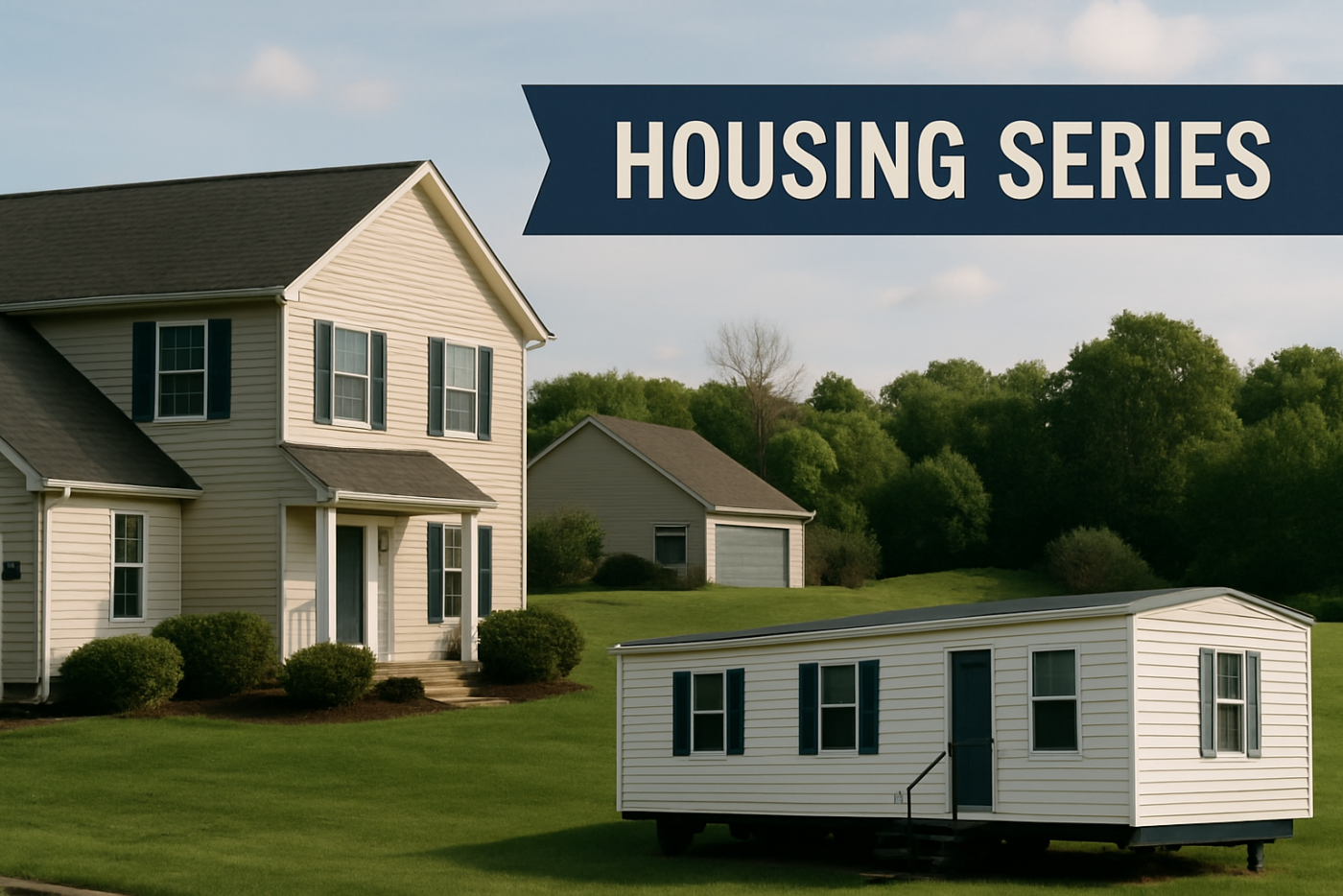Author: Josh Levy
North Carolina’s housing stock reflects broader trends driving the state’s development, including demographic and economic forces that have transformed the state over the past several decades. What can the age of housing and the percentage of mobile homes reveal about the state? Here are a few takeaways:
NC’s housing stock was built more recently than the nation’s
In general, the housing stock of the state is younger than that of the nation, with a median age 10 years younger than the US. Over half (50.5%) of the US housing units were built before 1980, compared to about a third (34.8%) of NC’s stock.
North Carolina built more of its stock from the 1980’s onward, outpacing the US in each decade as the state’s population increased dramatically due to migration from other places.
Of course, older housing doesn’t necessarily mean lower-quality—as in the case of historic homes that have been maintained and renovated over time. However, a large percentage of older homes may be an indicator that an area has not had recent investment in building new stock, perhaps due to a lack of new residents and/or economic activity.
We can see higher percentages of older homes in many rural counties throughout the state with much lower percentages in the metros of the Triangle and Charlotte as well as a few coastal counties with more recent population growth. Nineteen counties had over half of their housing stock built before 1980, led by Anson (61.7%), Washington (60.3%), Richmond (59.4%), Stanly (57.7%) and Martin (56.4%). Counties with the lowest percentage of pre-1980’s homes include Brunswick (14.7%), Wake (18.7%), Currituck (18.7%), Union (20.1%) and Hoke (20.9%), many of which have experienced rapid population growth and development in recent decades.
NC has twice the percentage of mobile homes as the US
According to the US Census Bureau, mobile homes make up 11.3 percent of all housing units in North Carolina, about twice the national average (5.7%).
Within the state, 84 counties have a higher percentage of mobile homes than the state average. Mobile homes make up over one-third of all housing units in six counties: Warren (39.7%), Greene (37.9%), Robeson (37.7%), Gates (36.5%), Sampson (34.0%) and Tyrell (34.0%).
Counties with the lowest rates of mobile homes include the urban counties of Durham (1.3%), Mecklenburg (1.5%), Wake (2.7%), New Hanover (2.7%), Guilford (3.0%) and Forsyth (3.3%). Despite these low percentages, these urban counties have about the same number of mobile homes as the six highest counties listed above.
Although mobile homes meet some of the need for affordable housing in the state, they tend to be more vulnerable to natural disasters such as hurricanes, tornadoes, flooding and wildfires that the state increasingly faces. And while there have been advances within the manufactured housing industry to reduce vulnerabilities and improve climate resilience, many homes are still located in areas subject to dangers.
Despite these challenges, there is still a need for affordable and resilient housing in all areas across the state. Even areas not experiencing population growth may still need investments in new housing to meet the needs of current residents and to attract future residents. Without safe and affordable housing near job centers, workers must live further away and commute longer distances. In this way housing serves as a kind of infrastructure that supports the larger labor market and economy.

